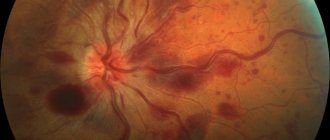Lactase deficiency (LD) in newborns is a pathological condition in which the child’s body contains a small amount of lactase. The enzyme does not break down incoming milk, which adversely affects the well-being of the newborn, its growth and development. Since lactose is not digested in the baby's body, he does not receive the necessary nutrition in full. A preliminary diagnosis can be made based on the external manifestations of the disease, taking into account the complaints of the child’s parents. Lactase deficiency, recommendations for eliminating which can only be given by a pediatrician, is a correctable condition.
What is lactase deficiency, its types
Lactose is a sugar found in the milk of mammals. The component has a beneficial effect on the growth and development of the child, increases his energy, stimulates the digestion process, and helps maintain normal intestinal microflora. Lactase is a substance that breaks down lactose. The enzyme is contained in the human body from the first days of his life. An insufficient amount of this substance in a child’s body makes lactose a favorable environment for the reproduction and growth of pathogenic microflora.
Depending on the origin of the pathological condition, LI is divided into congenital and acquired types. Type 1 deficiency is caused by the genetic characteristics of the child's body, and occurs in cases where the parents or close relatives of the baby also have lactase deficiency. The second type of disorder is acquired; it occurs in pediatrics more often than the first.
There is also a special, transient form of lactase deficiency. Its specificity is that the baby cannot tolerate mother's milk only at certain periods of time. This type of FN is most often observed in premature, low birth weight infants.
Features of lactase deficiency in infants, its causes
Congenital LI develops due to the prematurity of the child. His intestines are not ready to ensure complete digestion, and the lactase content in the body is insignificant.
The reason for the development of acquired LI is the particular state of the body of the baby or woman during gestation. In both cases, we are talking about factors that caused damage to the cells that produce lactase, which caused a deficiency of this enzyme. This happens when:
- The mother suffered from an intestinal infection while pregnant.
- A newborn has an allergic reaction to cow's milk protein.
- The baby suffered from an intestinal infection.
- The mother of the newborn has chronic diseases of the digestive system.
- A newborn developed atrophic changes in the intestine caused by a long period of tube feeding.
- The baby developed colitis (inflammation of the large intestine).
- The child was diagnosed with a severely progressive helminthic infestation.
- During pregnancy, the woman was treated with hormonal drugs.
There is also such a reason for the development of LN as lactose intolerance, caused by improper organization of breastfeeding of the baby. Sometimes the baby only drinks lactose-fortified foremilk. It enters the intestines in large volumes, and due to age, and not disease, the child’s body does not digest lactose (due to insufficient lactase). Therefore, it is important that the newborn consumes not only front, but also hind breast milk. This will contribute to proper digestion, growth and development of the baby, strengthening its immunity, and improving overall well-being.
Lactase deficiency: causes
Physiological lactase deficiency usually manifests itself as a result of the body’s maturation and is regarded by doctors as a normal phenomenon. The production of lactase in the human intestine begins to decrease from about two years of age, and by the age of six, an adult child is no longer able to digest as much milk as he absorbed in infancy. Pathology is considered to be congenital or acquired lactase deficiency.
Congenital lactase deficiency in children prevents the production of lactase in the intestines. The usual cause of congenital lactase deficiency in infants is a gene mutation. This is a fairly rare pathology. However, its symptoms are in many ways similar to other manifestations, so parents often independently diagnose their baby with lactase deficiency and begin to “treat” him for a non-existent disease.
Transient lactase deficiency is a temporary phenomenon and is usually characteristic of the immature intestines of premature babies. A few months later, after the premature baby's intestines mature and begin to produce lactase on their own, the problem disappears.
Secondary lactase deficiency, on the contrary, is common. It is caused by intestinal problems - infections, celiac disease, allergies, etc. Pathological processes prevent the small intestine from producing lactase and digesting milk normally. When intestinal diseases are eliminated, the ability to produce lactase returns again, and lactase deficiency in children goes away.
Too much lactose. If you overdo it with lactose, symptoms of lactase deficiency may also occur. This is possible with an illiterate breastfeeding regimen: for example, when the mother takes too long breaks between feedings, changes breasts too often or limits the time of feeding. As a result of these actions, the baby receives exclusively “front” milk and does not reach the point of sucking out “back” milk.
Lactase deficiency in children immediately after birth is very rarely diagnosed as an independent, genetically determined disease. Much more often it occurs due to improper feeding of the baby. In addition, lactase deficiency in infants and the symptoms of this serious pathology are often confused with an allergy to cow's milk protein.
How to recognize lactase deficiency in a baby?
The disease is confirmed only if the results of laboratory and instrumental studies are available. These include a biopsy of the small intestine and stool examination. An examination of the baby and a survey of his parents are necessary to study the medical history, establish a preliminary diagnosis, and exclude the presence of pathologies that are similar in symptoms.
Lactase deficiency can manifest itself with the same symptoms as intestinal infection, classic dysbiosis, colitis, enteritis.
Biopsy is a dangerous, time-consuming method: experts prefer to prescribe it in cases of extreme necessity. Therefore, doctors recommend only laboratory tests to determine how much of the enzyme is contained in the child’s body. The results of the coprogram and stool analysis for carbohydrates together allow us to understand the reason for the deterioration of the newborn’s well-being.
Important! The child's stool should be submitted for examination in the first hours after bowel movement.
However, using excrement from a diaper is not recommended. It is optimal for the baby to defecate on oilcloth. Before taking material for research, you should stop using laxatives. The newborn should have bowel movements naturally.
Symptoms and signs of lactase deficiency in infants
Symptoms of lactase deficiency in infants can be observed by all attentive parents - the main signs are:
- Newborn behavior. During feeding, he is restless, shows increased activity, tearfulness, and does not respond for a long time to attempts to calm him down.
- Change in the nature of bowel movements. The consistency is liquid, with a sharp, sour odor, and there is a frequent urge to defecate.
- Intestinal peristalsis. During feeding, the baby can hear rumbling in the tummy, which is associated with increased gas formation.
- Intestinal colic. Due to metabolic disorders and disruption of the digestive process, the newborn experiences intra-abdominal discomfort. Intestinal colic begins to bother the child after 30 minutes. after finishing feeding. It is during this period that the process of digestion and breakdown of lactose begins. The child tenses up, cries loudly and for a long time, and actively raises his legs.
- Appearance. A newborn is pale, lethargic, apathetic, and does not correspond to his age.
Indirect signs of LI are the appearance of rashes on the skin of the baby’s face and body. Since the iron content depends on the concentration of lactase in the body, the child may develop anemia, which cannot be eliminated with medications or improving the quality of nutrition.
Other signs of lactase deficiency in infants are a sharp alternation of increased appetite and a period of weakening, tearfulness, and frequent regurgitation. Since nutrition is not beneficial for the growth and development of the body, the child lags behind in physical development and is underweight. Due to the fact that milk is not digested, the baby experiences hunger: a few minutes after putting it to the breast, he loses interest in feeding and cries for a long time.
What is transient lactase deficiency?
— Such lactase deficiency goes away as the child grows older. “Transient” means having a temporary nature.
It is associated with the immaturity of the intestinal wall and, therefore, with low production or low enzyme activity. The risk group for transient lactase deficiency often includes premature infants, especially those born from 28 to 34 weeks (their lactase activity lags 30% behind the activity level in full-term infants), children with intrauterine growth retardation, and low birth weight infants.
— What health problems are caused by lactose deficiency?
— No drastic changes are visible, especially in early childhood, but over time this can affect the child’s health.
Obvious problems that can arise from lactose deficiency in infancy:
- Lactose, like all carbohydrates, is osmotically very active
and promotes water retention in the intestinal lumen. If water is retained and not absorbed, diarrhea develops. - Lactose is absorbed by intestinal microflora
, which triggers the fermentation process and gas formation. Flatulence and bloating cause discomfort to the child. - Lactose is a powerful energy substrate.
It is broken down into monosaccharides, which nourish the child’s brain during the period of active growth, which is very important for the nervous system.
— In what cases can a child develop acquired lactose intolerance to breast milk?
- Acquired lactase deficiency (secondary) develops due to damage to enterocytes - cells that produce lactase in the intestine. This happens when the intestines suffer from infectious, allergic, inflammatory and autoimmune diseases or surgical pathologies.
— Is lactose intolerance inherited?
— Lactase deficiency is not inherited. But in medicine there is the concept of “predisposition”, when under a certain set of circumstances, including the presence of relatives with lactase deficiency, the baby may develop this disease.
— How does lactose intolerance manifest in a child?
— The severity of clinical symptoms depends on the total degree of decrease in enzyme activity. It includes a quantitative reduction in the intake of lactose from food, a change in the nature of the intestinal microflora, and individual pain sensitivity to the tension of the intestinal wall.
Diet of a nursing mother
A mother's diet for lactose intolerance in infants involves limiting or completely abstaining from drinking whole milk. In this case, the daily diet should contain a fermented milk product, hard cheese or butter, since they serve as a source of calcium and vitamins. A woman should exclude cow's milk from her diet, since the protein it contains can be irritating to the child's body. If after this correction the child no longer shows signs of intestinal irritation, it means that the condition was not caused by lactase deficiency, but by an allergy to protein.
A woman who is lactating must exclude foods and dishes containing sugar from the menu. Optimal nutrition - vegetables, rice, eggs, nuts, corn, lean meats and fish.
Detailed description of the study
Lactose intolerance (lactase deficiency) is a condition in which, after consuming whole milk and products containing lactose, intestinal disorders (diarrhea, flatulence) occur. Fermented milk products are absorbed normally.
Lactose itself cannot be directly absorbed from the intestines into the blood, as it is a disaccharide. It must first be broken down into two molecules of monosaccharides: glucose and galactose. This is facilitated by the active protein enzyme lactase, which is produced by the cells of the mucous membrane of the small intestine.
Undigested milk sugar causes fermentation in the large intestine and, having high osmotic activity, draws water from the tissues, which leads to diarrhea. If lactose is not absorbed in the small intestine, it enters the large intestine. The bacteria living there absorb this disaccharide, resulting in the formation of water and the release of gaseous substances: carbon dioxide, hydrogen and methane. Due to the accumulation of gases in the large intestine, unpleasant and painful sensations, flatulence, bloating occur, and due to excess water, diarrhea occurs. Fermented milk products, in which all the lactose is converted into lactic acid (lactate), usually do not cause such symptoms.
Main causes of lactase intolerance
1. Primary causes (congenital)
- Complete absence of enzyme. Congenital intolerance includes alactasia (lactase is not produced). This condition is associated with structural abnormalities of the lactase gene and is extremely rare. It appears from birth and is severe.
- Immaturity of premature babies. More often, symptoms appear due to the immaturity of the enzymatic system in premature infants and the unstable functioning of physiological processes. Over time, this condition may disappear.
- Age-related hypolactasia. A genetically determined decrease in lactase levels in children after the first year of life, towards the end of the breastfeeding period. When the need to feed exclusively on milk disappears, enzyme production decreases or stops.
2. Secondary causes (acquired) With secondary lactose intolerance, intestinal epithelial cells are damaged, their ability to produce the enzyme deteriorates or completely disappears. The disease can occur in people of any age. It is provoked by helminthic infestation, infections, tumors, and intestinal inflammation. After eliminating the cause, it does not always disappear.
The enzyme lactase, which is encoded by the LCT (LPH) gene, is responsible for the breakdown of lactose. Regulation of LCT gene activity is carried out under the control of the MCM6 regulatory gene.
LCT and its regulator MCM6 are present in both parental copies of DNA, and a person inherits this gene from both parents. If nucleotide C (cytosine) is present at both sites in link 13910, MCM6 turns off the LCT gene and enzyme production stops, which leads to lactose intolerance with age.
If in at least one section the nucleotide C (cytosine) is absent, and instead there is T (thymine), then the LCT gene is active and working, the lactase enzyme is produced, and milk sugar (lactose) is absorbed by the body.
Coding of designations for possible combinations (polymorphisms):
CC – the combination disables the LCT gene.
TC is a variable polymorphism: the work of a gene may be suppressed or may not change.
TT is a working combination; the lactase gene is not blocked.
Is it possible to cure and what to do if a baby has lactase deficiency?
If a child is diagnosed with lactase deficiency in the body, parents do not need to worry, because, regardless of the form of the pathology, it can be corrected. But for this it is important not to self-medicate, but to follow the recommendations of the observing pediatrician. Lactase preparations are used to treat children suffering from lactose intolerance. The most effective options are Lactase enzyme, Lactase baby, Lactazar. They are first dissolved in mother's milk and given to the baby.
Important! Lactase drugs do not affect the quality of a woman's milk.
To carry out 1 procedure, 30-50 ml of biological fluid is required. After mixing with the drug, the milk is infused for no more than 3 minutes. First, the newborn needs to be bottle-fed, and only then put to the breast. Lactase preparations are characterized by high therapeutic efficacy. They normalize the state of bowel movements already on the 4th day from the start of their use, intestinal colic is eliminated during the same period or a day later. After 10 days of proper use of the medication, the composition of stool improves.
If the newborn is bottle-fed, with LI he is transferred to low-lactose or lactose-free formulas. Additionally, symptomatic treatment is prescribed - probiotics are recommended, as they normalize the intestinal microflora. The child’s water-salt balance is also corrected. For children suffering from LI, it is necessary to select complementary foods especially carefully - they should not contain lactose.
Actions that will help overcome lactase deficiency:
1. Do not feed according to the schedule. In order for a newborn to consume not only foremilk, but also hindmilk, he needs to empty each mammary gland completely. To do this, you need to give the baby the breast at the initial appearance of his appetite, and not wait for specific feeding hours. Long intervals between feeding a newborn lead to the accumulation of foremilk in the breast, and the likelihood of access to hindmilk is reduced. 2. Do not neglect night feeding of the baby. At this time of day, large amounts of hindmilk are produced. 3. Follow a diet. The specialist will develop a nutrition program for the child regarding complementary foods (it should not be dairy). If the congenital form of LI is confirmed, the baby follows a diet for life. When lactase deficiency is caused by intestinal diseases, the child adheres to a therapeutic diet until the underlying pathology is eliminated. It is important to discontinue the diet gradually, and only after receiving the results of a control stool examination. Lactase deficiency is characterized by a favorable prognosis. A set of measures - the use of medications and maintenance therapy, a proper diet, a well-designed diet for the mother - contributes to the complete elimination of the disease.











